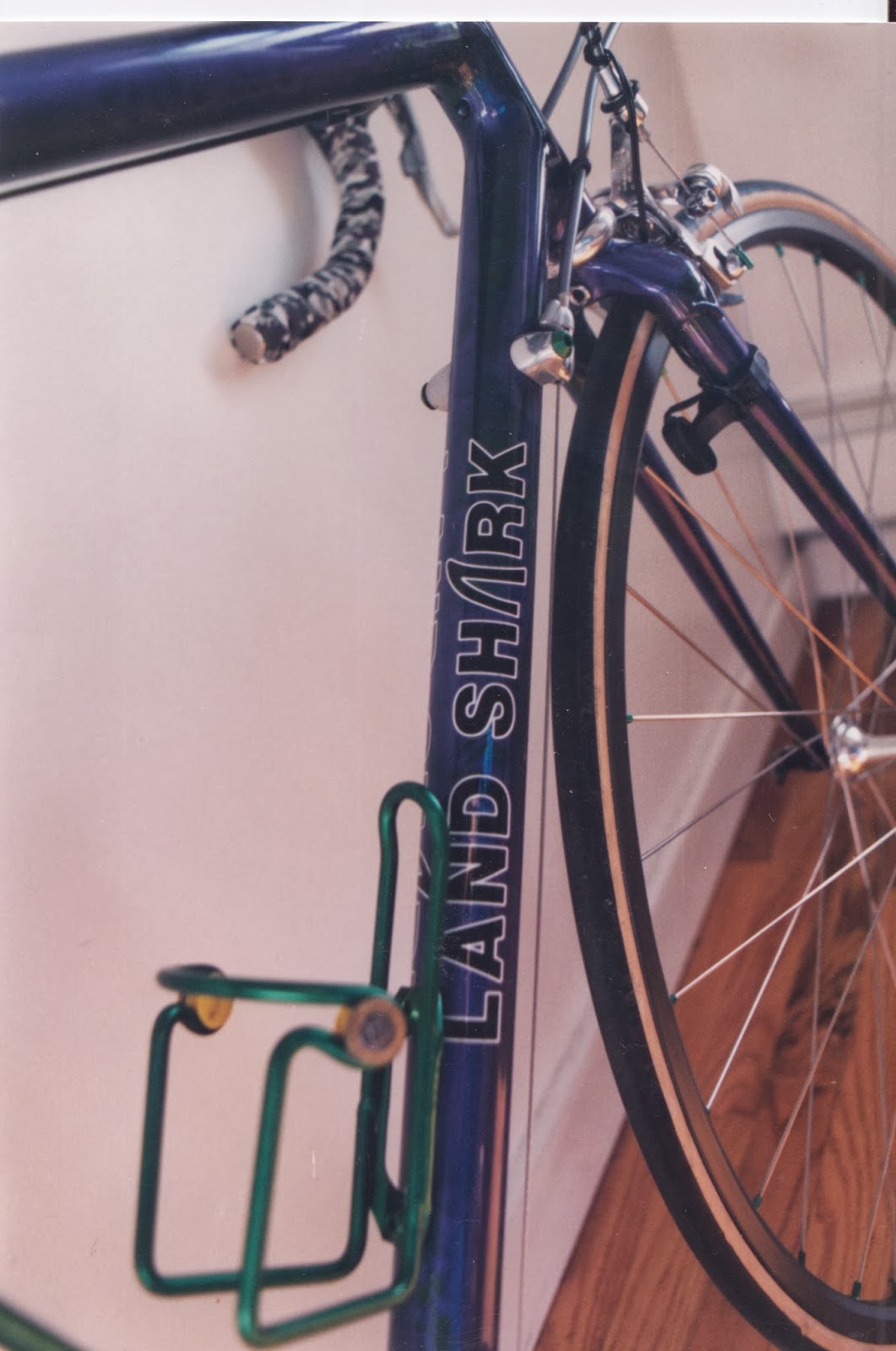In my previous post about my old Land Shark, I
mentioned that John Slawta, who builds and paints all LS bikes, is constructing
his frames only from carbon fiber.
I am sure he’s still doing the great work he’s
always done. However, in the end any
carbon-fiber frame is still plastic.
Yes, it has strands of fiber woven into it, but it’s plastic that holds
them together.
To be fair, those bikes are stronger—and probably
lighter—than earlier plastic bikes. I’m
not talking only about earlier carbon-fiber bikes, such as the Graf-Tek
(Exxon’s only foray into the bicycle industry) during the mid-to-late 1970’s or
the first high-production CF bikes made by Trek and other companies a
quarter-century ago. I am talking about bikes
made only from the resin.
 |
| "The Original Plastic Bike" |
A few years before the Graf-Tek came out, a
company named The Original Plastic Bike claimed to have built a plastic bike that weighed about half of what
racing bikes of the time weighed. It was
offered in primary colors (red, yellow and blue) and black, if I recall
correctly.
I don’t know how many people actually bought or
rode them. Apparently, there was some
sort of scandal surrounding them and investors lost out. Also, as it turned out, some parts, such as
the chain and spokes were made of steel.
Of course, 99.99 percent of bikes ever made have such parts, if at
varying levels of quality. Even the most
technologically advanced of today’s CF bikes will have a steel chain and, most
likely, spokes.
Perhaps the day will come, in my lifetime, when
all frames are made from carbon fiber. I
hope it doesn’t.
Yes, carbon-fiber bikes are light and fast (when
they’re designed well). But I sill have
to wonder how long they’ll hold up. I
recently saw an early Trek CF bike. Its
owner admitted that it had been sitting in a garage for about twenty
years. Perhaps they’re stronger than
anyone realizes. And, certainly, rust
and other kinds of corrosion are not issues, as they are with steel and other
metals. But one still has to wonder how
well they take repeated, prolonged stress.
But the other reason why I hope that we don’t have an all-carbon bike world is that the materials are derived completely from fossil fuels. Perhaps someone will figure out how to make carbon-fiber tubing from other materials, or another material may supplant it altogether. Still, I have always felt good that by cycling instead of driving, I have reduced my “carbon footprint,” however incrementally.
Can you see an ad of the future: “Carbon without the footprint”?
















